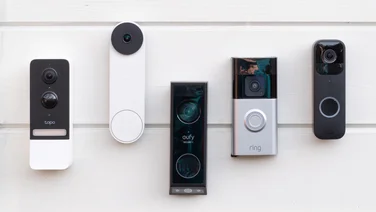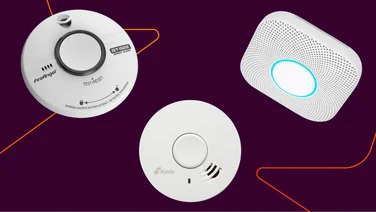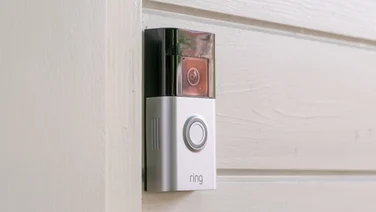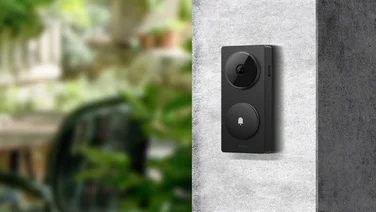To help us provide you with free impartial advice, we may earn a commission if you buy through links on our site. Learn more










Samsung paid an incredible $200 million for Silicon Valley startup SmartThings last year, but so far the second generation, Samsung-approved smart home line-up has yet to appear on this side of the Atlantic. That is set to change this week, though, as Samsung has just confirmed the UK will be receiving a full selection of SmartThings accessories on the 10th of September.
As part of Samsung’s effort to break into the Internet of Things and the connected home, SmartThings is an expandable kit designed to network your appliances, lightbulbs and other smart gadgets to one central hub, giving you control over everything from a smartphone. iOS, Android and Windows Phone are all supported, so no-one gets left out.

The SmartThings Hub will be available for around £99 separately, or as part of the (estimated) £199 Starter Kit. It plugs into your router and interacts with all the smart appliances and sensors within your house – whether they are part of the SmartThings range or not. It supports protocols including Zigbee and Z-Wave, meaning big-name brands like Philips Hue lightbulbs, Yale smart locks and D-Link security cameras are all supported out of the box, and the company has suggested Bluetooth control may be possible in a future firmware update.
It draws power from the mains, but in the event of a power failure it has four AA batteries which can keep the Hub up and running for up to 10 hours. It was unclear at the announcement whether there would be any kind of mobile data backup too, as is the case in America. Two USB ports on the back are ready for expansion in the future, which should mean there’s no need to upgrade to a brand new Hub.

Because of a few last-minute changes and localisation bugs Samsung hasn’t actually revealed the final SmartThings app, but having seen a prototype version in action, it’s clear the system has real potential. With a simple layout, no-jargon descriptions and easy to create IF/AND rules, it shouldn’t take more than 15 minutes to get set up with motion-controlled lighting, notifications when the kids come home from school, or a boiled kettle first thing in the morning.

You can schedule different automations on different days, stack actions using a multitude of sensors and even control third party devices directly, with no need to open a second app to change the colours of a Philips Hue light bulb, for example.

There’s already a growing range of official SmartThings sensors, of which five will be available in the UK at launch. The Presence sensor (£30 SRP) is a tiny tag designed to fit on a keychain or pets collar; it recognises when someone arrives or leaves the house, and creates actions accordingly. If you like the idea of automatic lighting, heating or music when you get home from work, you won’t need to buy one of these for yourself, as your phone also acts as a presence sensor.

The Motion and Multi sensors (£30 each SRP) are primarily designed to keep you informed, by sending messages when someone walks into a particular area, for example, or if a door is opened within a certain time of day. The Motion sensor can be used to trigger lights too, so you wouldn’t need to turn on a lightswitch when going to the bathroom at night. Both have integrated temperature sensors, which can be used to set up actions, but the Multi also has vibration and orientation sensors – making it ideal for alerting you when someone knocks on the door, or for checking whether you shut the garage door on your hurry to leave home in the morning.

The Moisture sensor (£30 SRP) was built solely because the company founder suffered a burst pipe while he was away from home for the Winter; it immediately alerts you if any water is detected, helping you prevent serious water damage from broken water fixtures.
It’s the Outlet adaptors (£45 SRP) that could prove most useful, however, letting you control individual plug sockets remotely. You can run power on a schedule, in order to create the appearance of someone being home while you’re actually on holiday, or to have a boiled kettle the moment you get home at night. Each Outlet adaptor also monitors energy usage, reporting power draw through the app.
You get one Outlet, one each of the Multi, Motion and Presence sensors, and a Hub in the Starter kit. Each SmartThings sensor takes CR2450 watch batteries, which should last up to a year based on average usage, although this is apparently a conservative estimate; depending on how often each sensor is triggered, it could be two years before the app warns you it’s time to replace the batteries inside them.

While SmartThings looks comprehensive on the surface, there are one or two omissions. There’s no light sensor, although the system tracks sunrise and sunset times and there are third party sensors available for anyone looking to light up a basement or attic whenever they enter it.
More troubling is the lack of a smart light switch. It’s clear that Samsung wants SmartThings to be an out-of-the-box upgrade, rather than something you have to break out power tools to install, but currently this means leaving your lights on all the time and controlling them solely from the SmartThings app.
Unless you plan on putting Z-Wave or Zigbee bulbs in every room, and don’t mind scrambling for your smartphone every time you want to turn the light, there’s no way to control ceiling-mounted lights. Each smart plug costs an estimated £45, which would be an expensive alternative.
Samsung and SmartThings are working to close those gaps, however, and are beginning to look elsewhere for ways to automate your life. A prototype pressure sensor, designed to fit under a bed and measure heartrate, track sleep and trigger actions when you wake up in the morning was shown off, although it isn’t yet ready to go on sale. Hopefully this is a sign of things to come, with the company closing the gaps in its range while continuing to support third party devices.

Individually, SmartThings sensors look expensive, but as a starter kit that doesn’t require any rewiring or monthly fees, there’s definitely an appeal to a one-box system. Samsung SmartThings will be going on sale in the UK officially on the 10th of September, with Currys, PC World and Samsung’s own online store first to stock the range. We’ll be putting the system on test as soon as we get back from this week’s IFA show in Berlin, so stand by for a full review.






